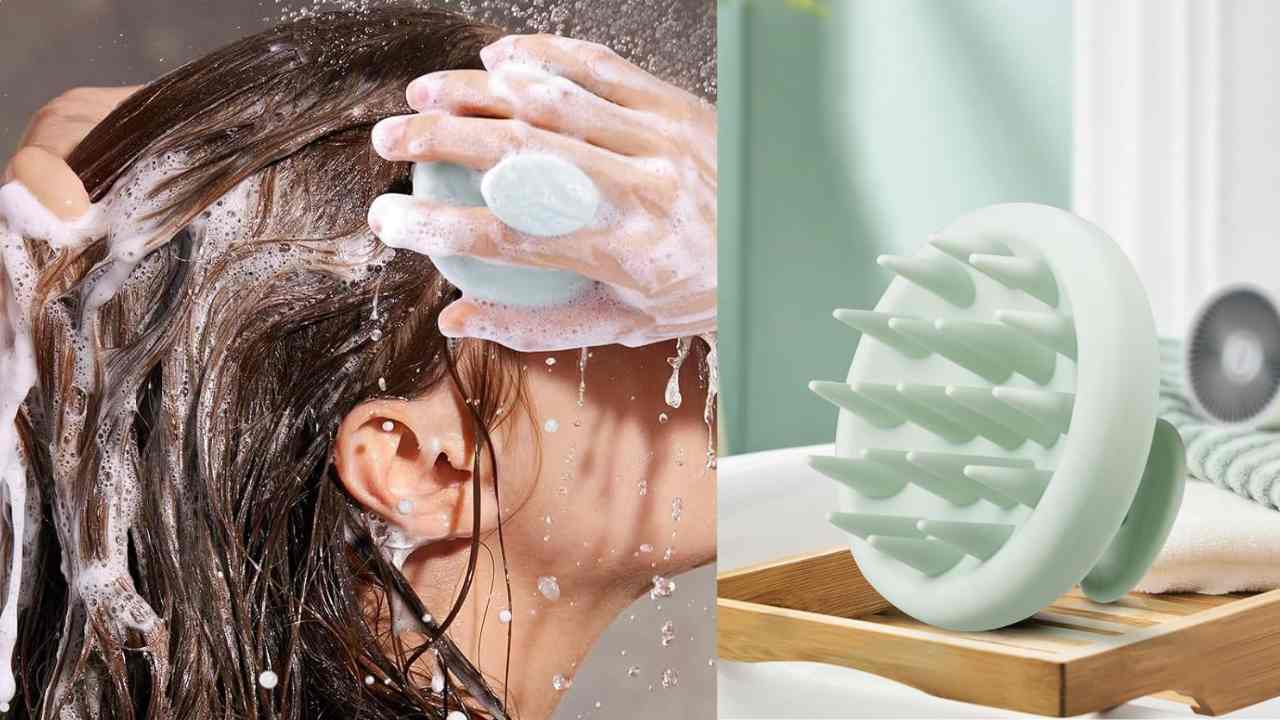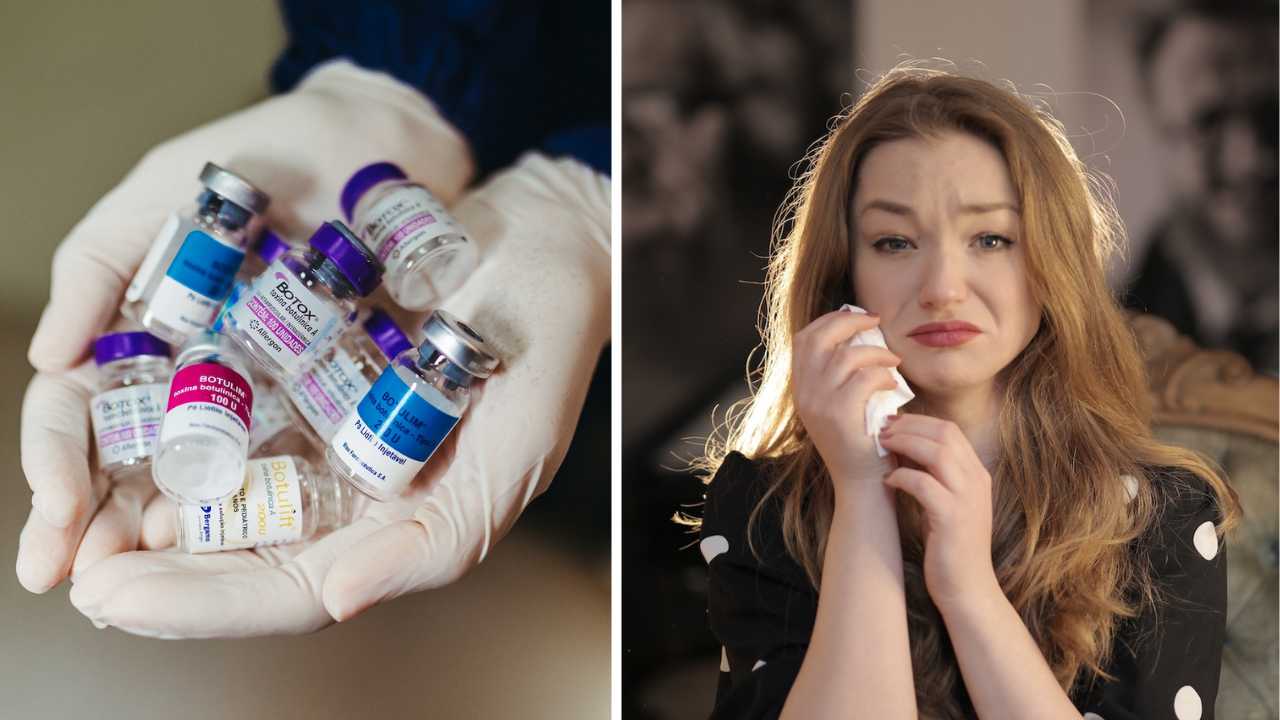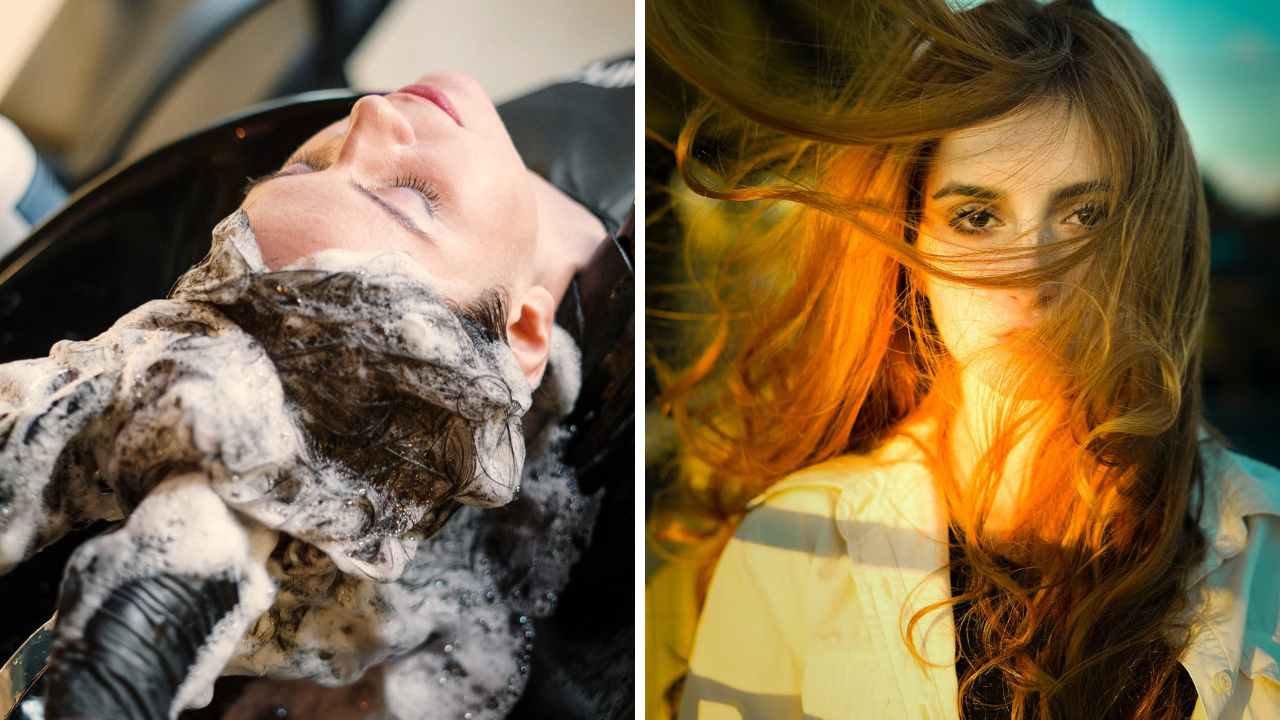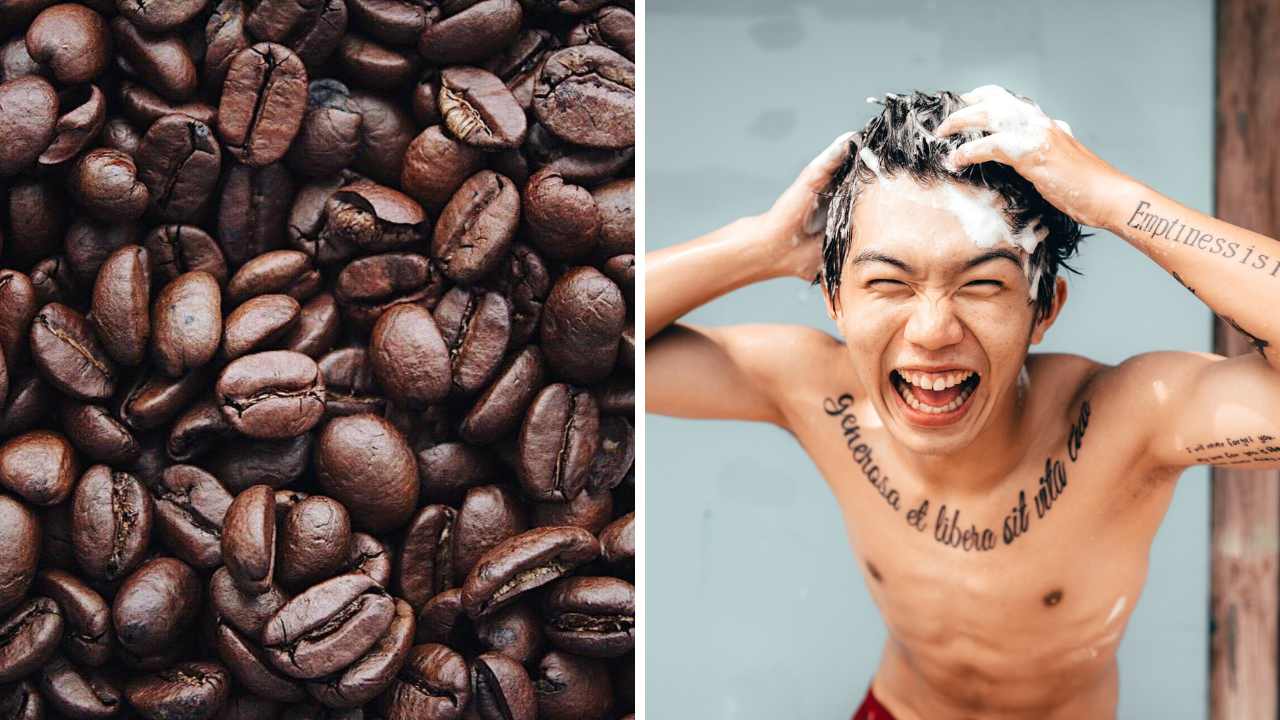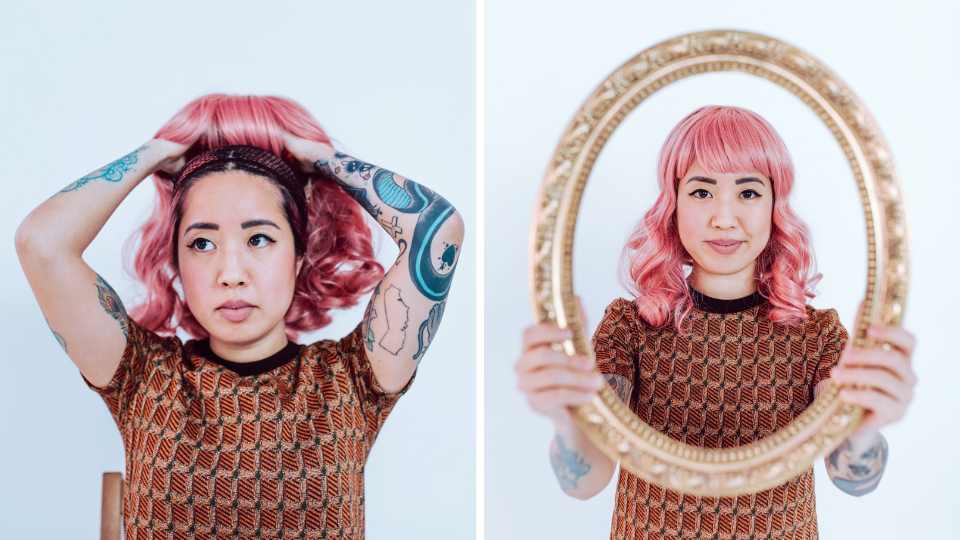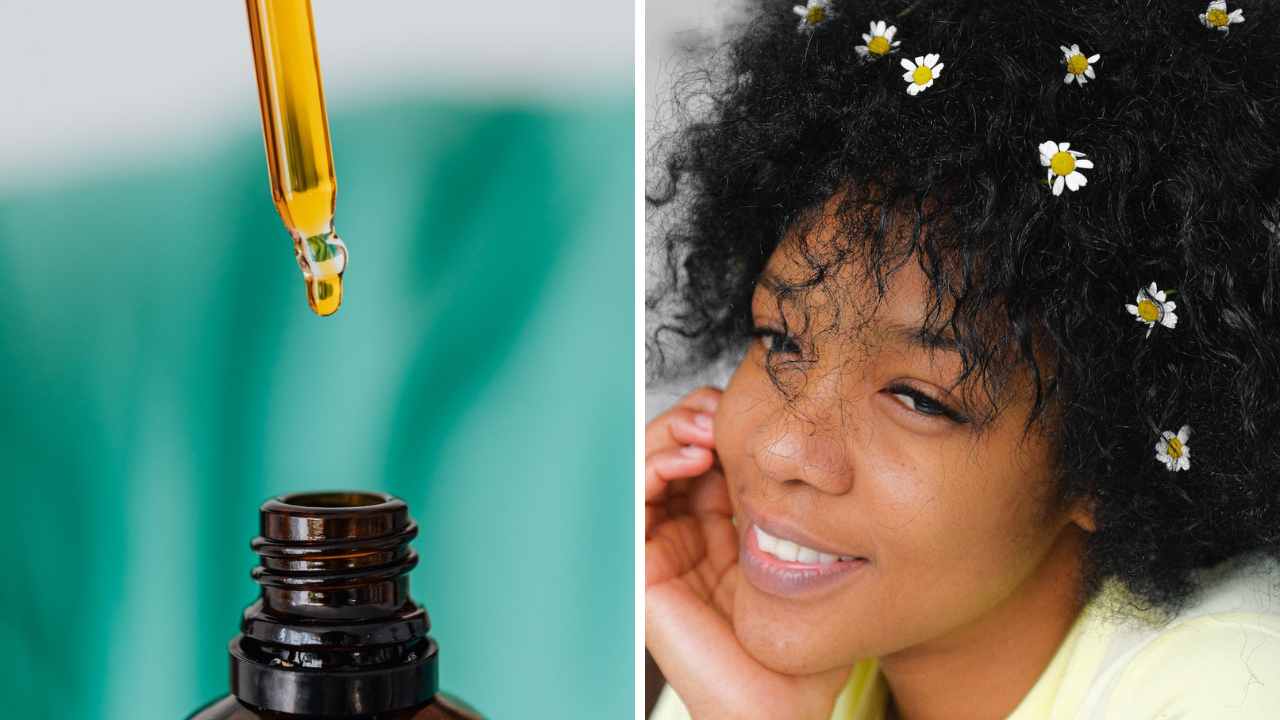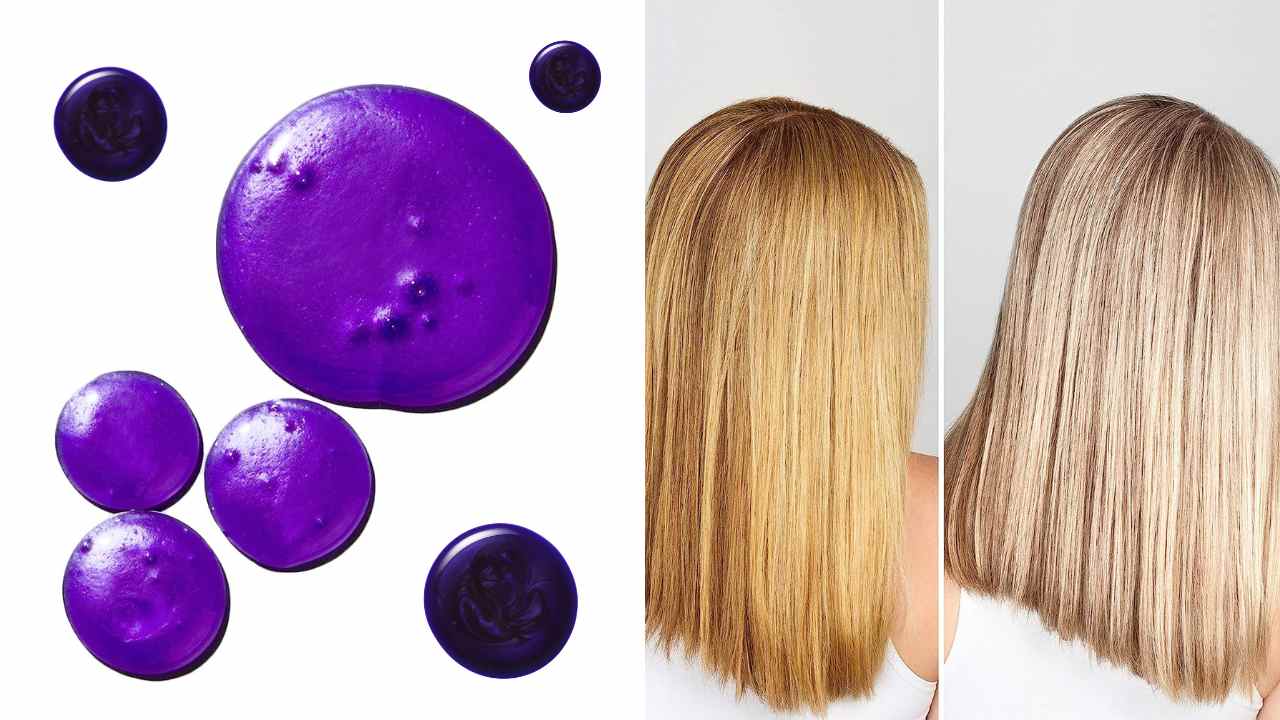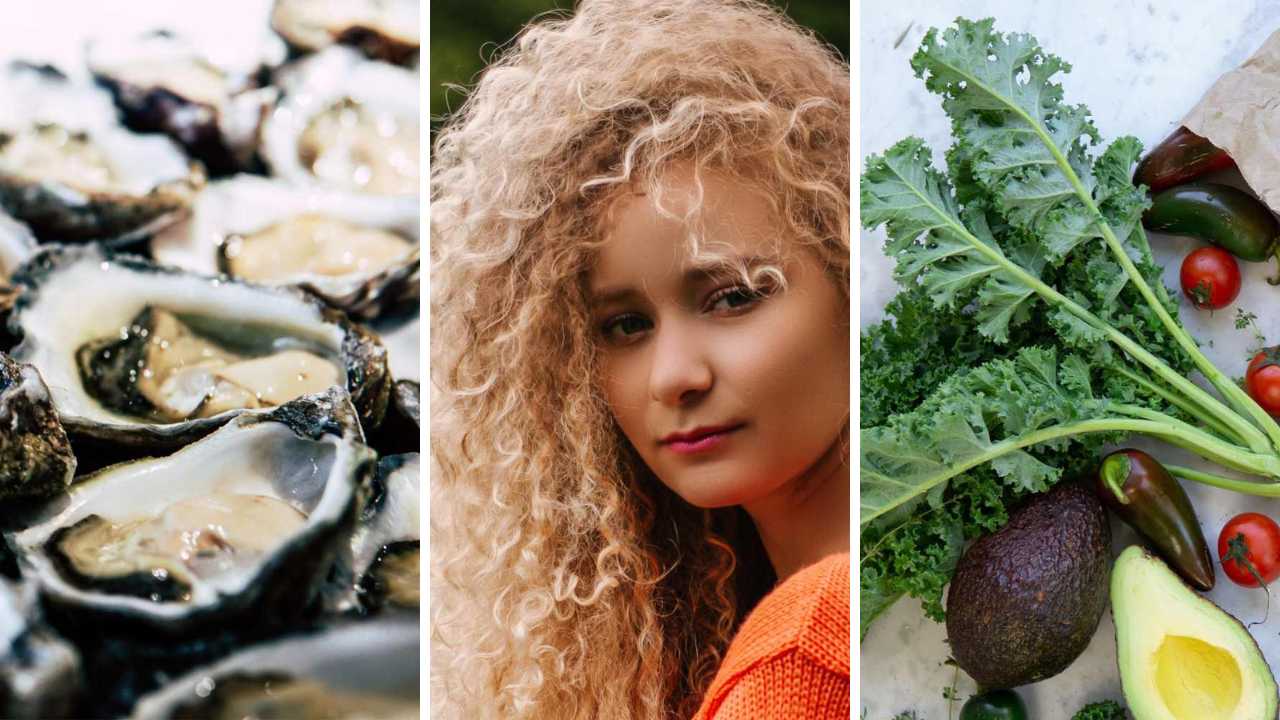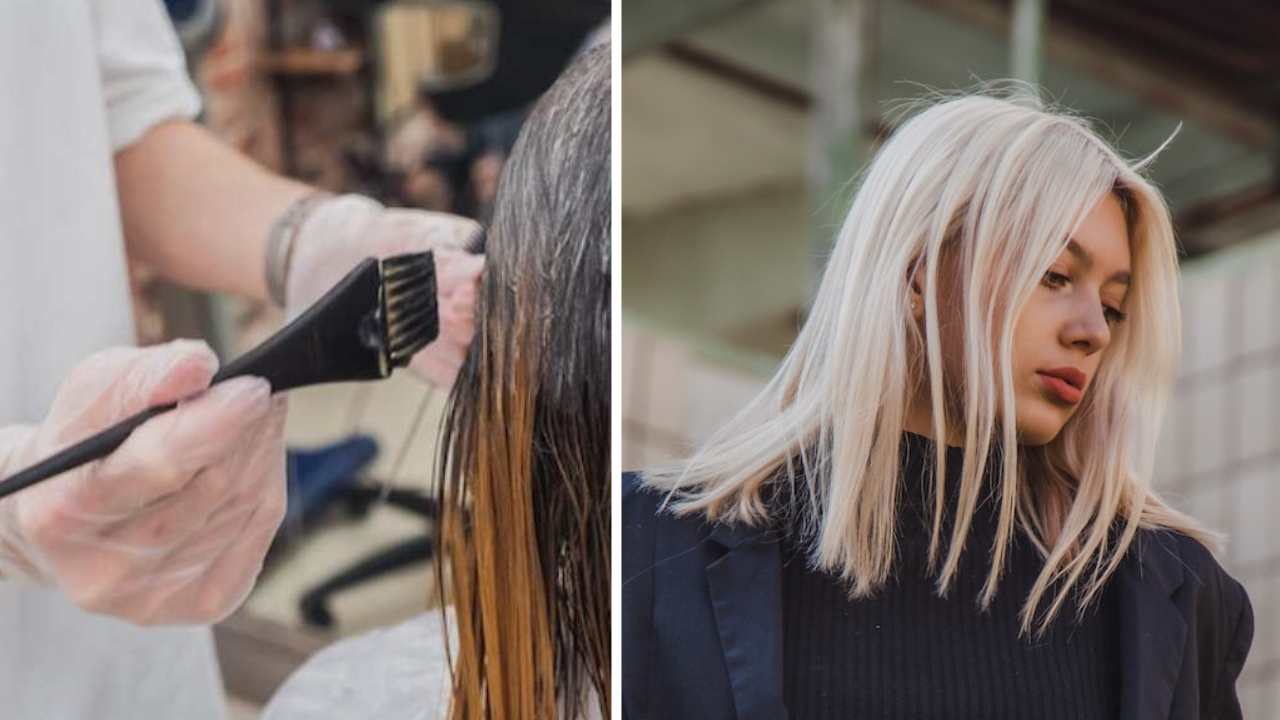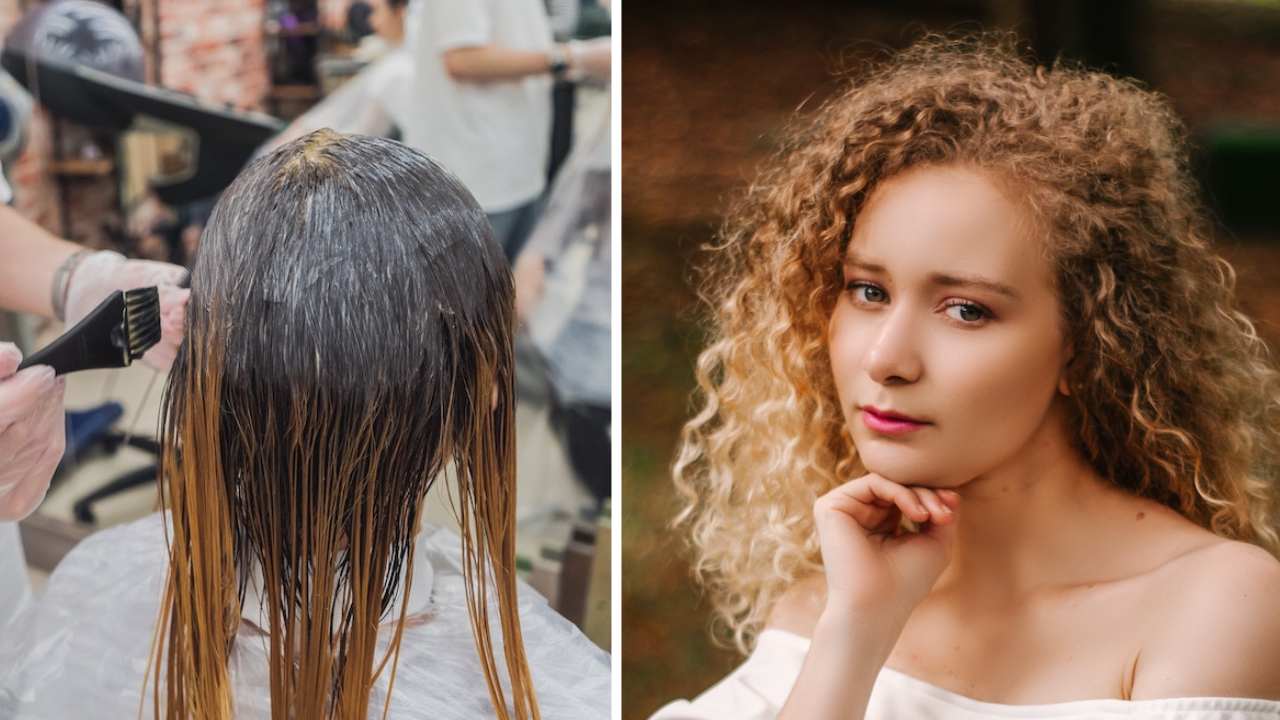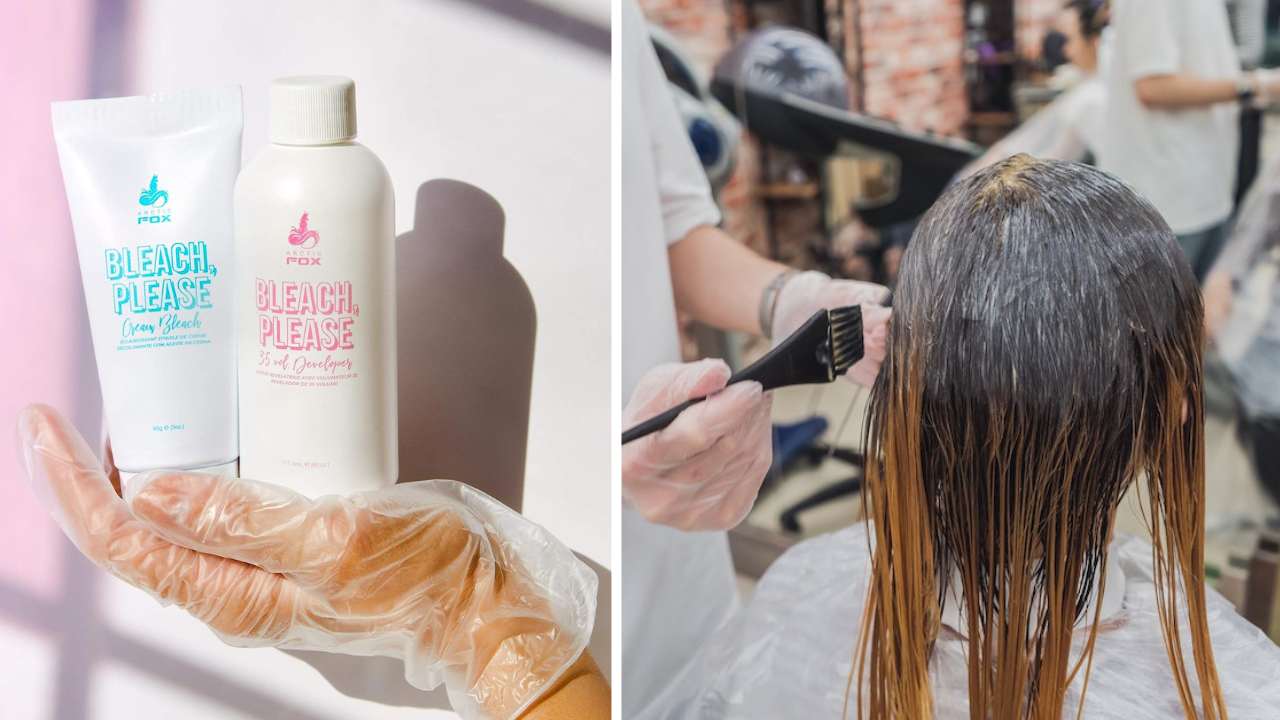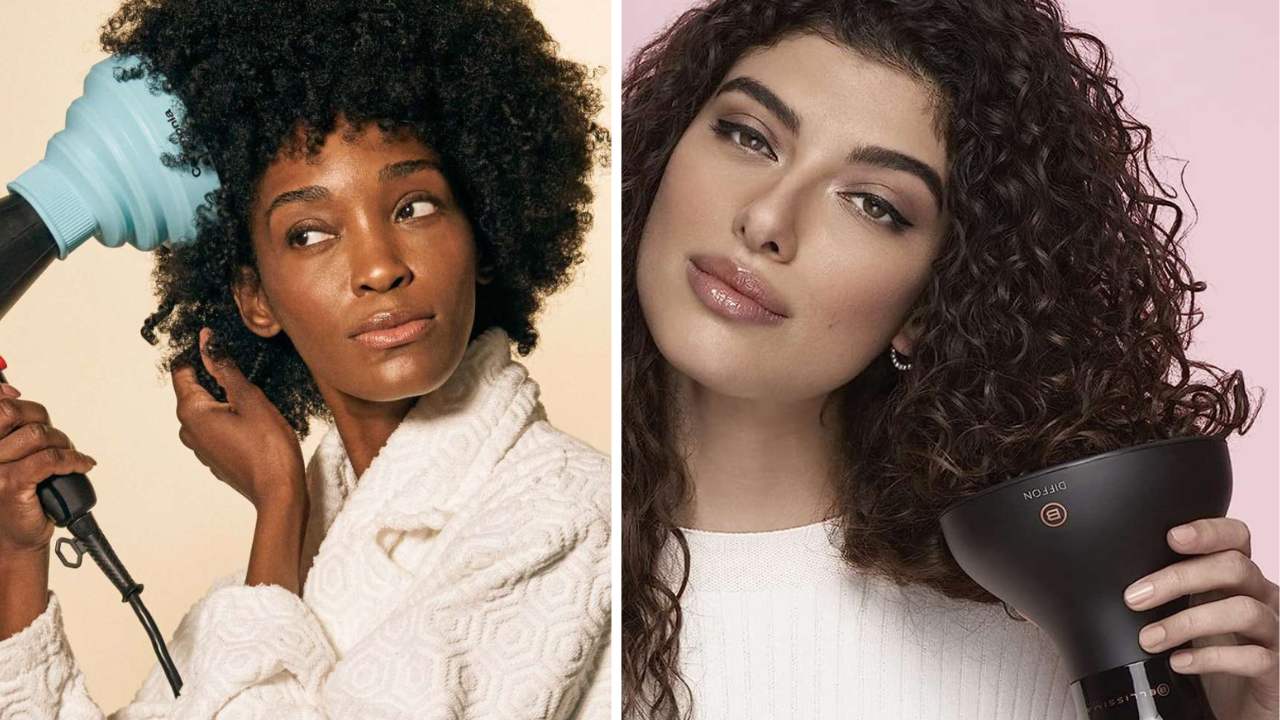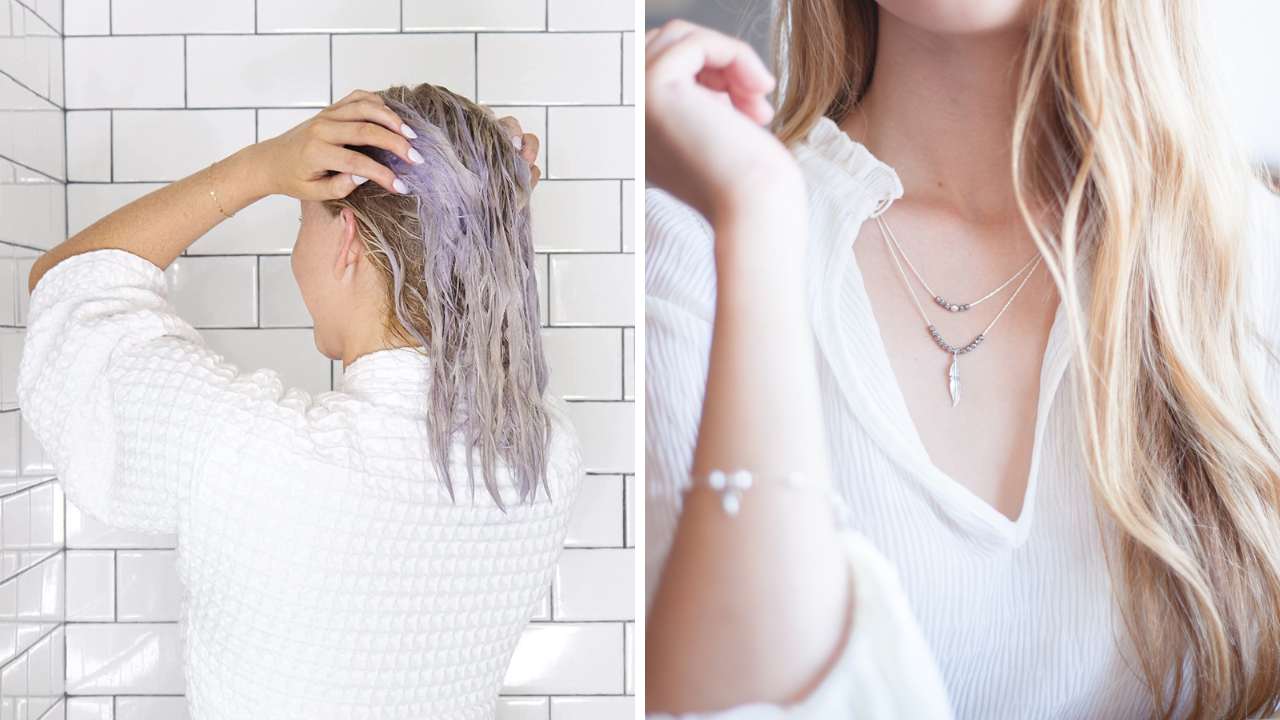
Does Purple Shampoo Work on Natural Blonde Hair? Maybe!
If you’re a natural blonde, chances are you’ve heard about purple shampoo. But does it actually work? Does it do anything for your hair if you haven’t treated it with color?
We decided to investigate and answer the question of whether or not purple shampoo can really make a difference for naturally blonde hair. Keep reading to find out!
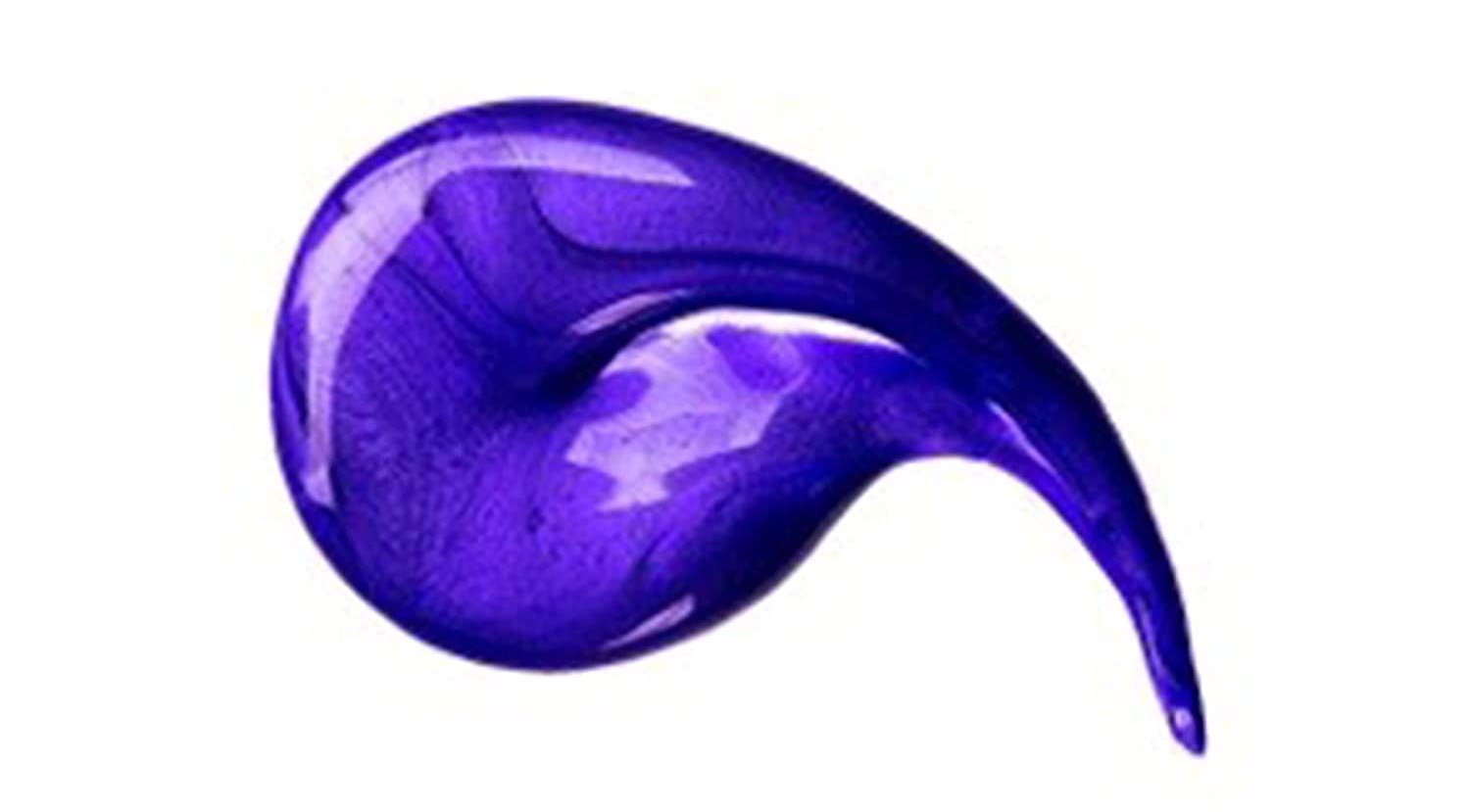
Is Purple Shampoo Just for Color Treated Hair?
While purple shampoo is widely known as a way to keep colour treated hair looking vibrant, it also has many benefits for those with naturally blonde hair.
The reason why purple shampoo is so popular among those with color-treated hair is because the formula helps counteract brassy tones that may come from bleaching or other chemical treatments.
The same principle applies to natural blondes, though in a slightly different way.
For example, when light hits your hair, it splits into what’s called “warm” and “cool” tones. Those who have lighter blonde shades tend to have more cool tones than warm tones, while darker blondes have more warm tones than cool ones.
The violet pigment in purple shampoo helps reduce the appearance of warm tones in lighter shades of blonde—and brings out the cooler shades that are already present in your hair.
In essence, the violet pigment counteracts yellow hair and orange undertones in light blondes and keeps your color looking fresh and vibrant without any additional coloring treatments!
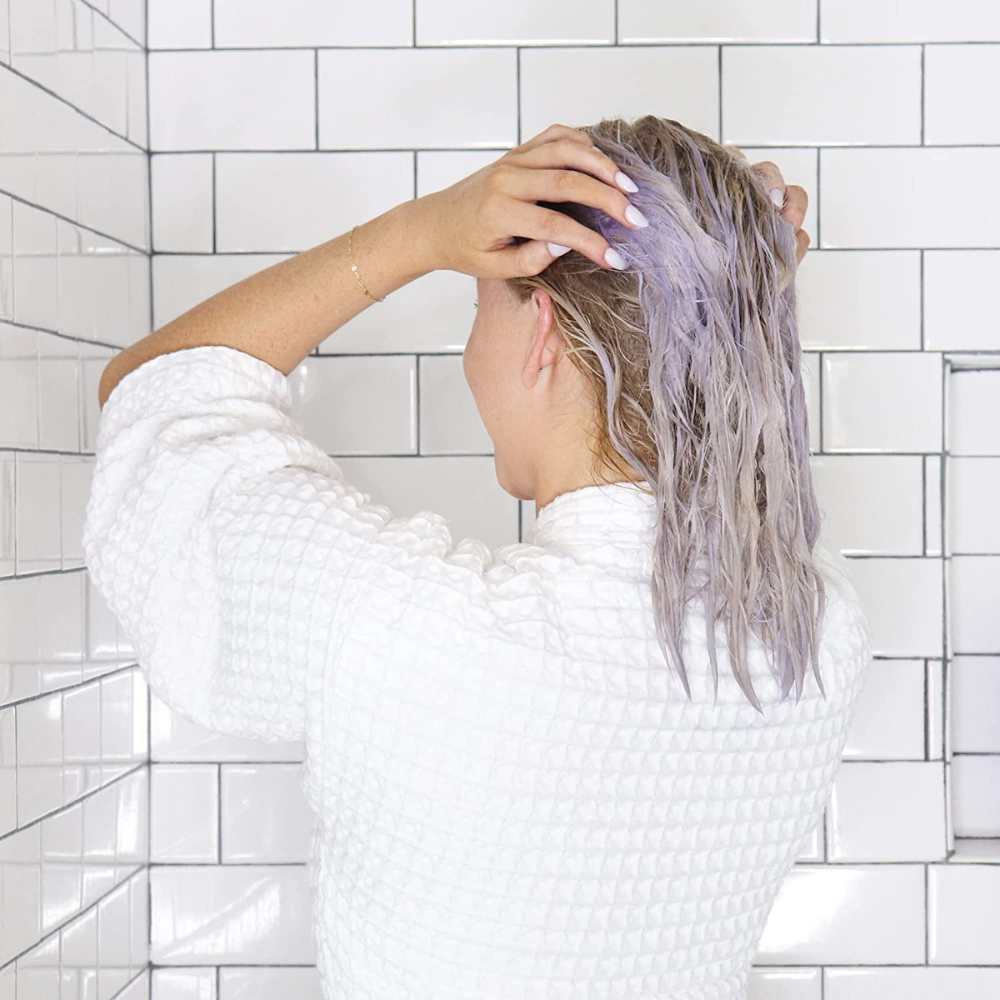
How Purple Shampoo Works
If you take a look at a color wheel, you'll see that yellow and purple are absolute opposites. Therefore, purple shampoo works by using its violet pigment to counteract yellow and orange undertones in natural blonde hair.
It does this by depositing a small amount of violet dye onto each strand of your hair when used correctly.
This helps neutralize brassiness and bring out the cooler shades already present in your locks!
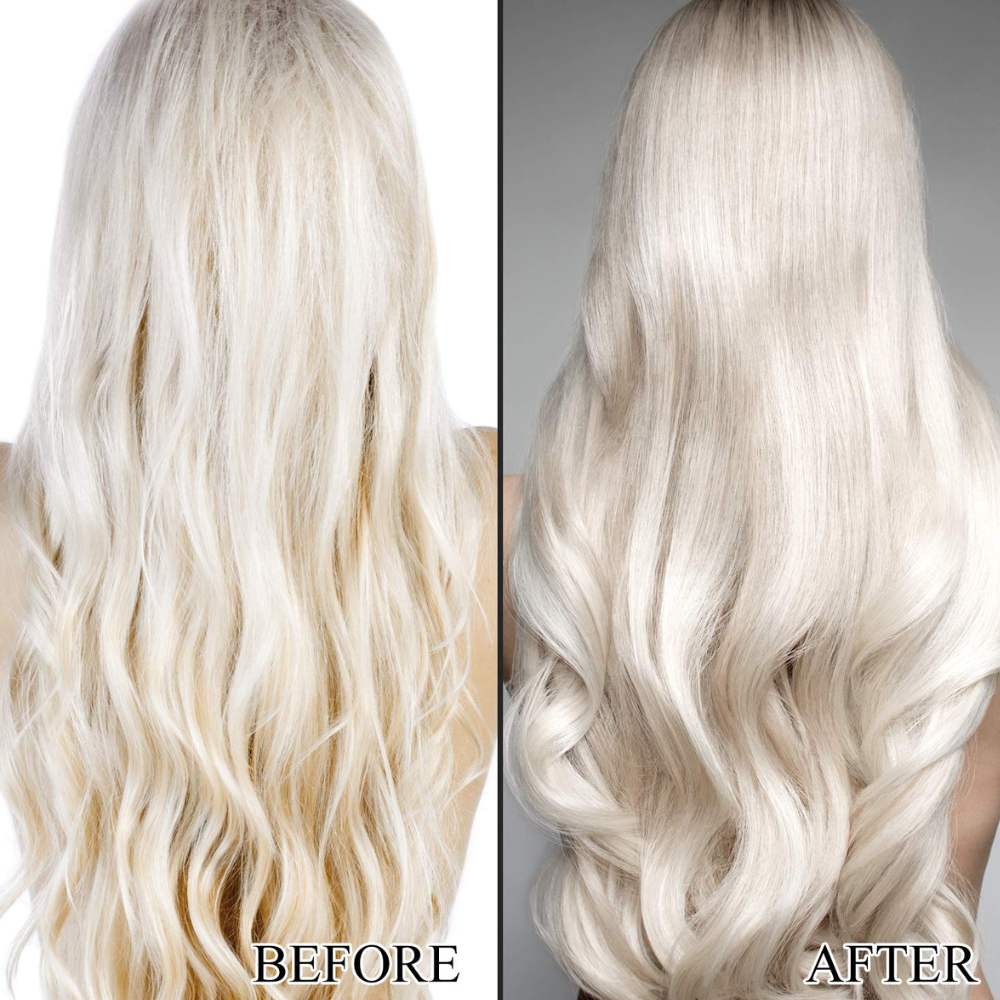
What Purple Shampoo Does
Purple shampoo does several things depending on how often and how much you use it.
First off, if used regularly (once every 1-2 weeks) it can help keep brassiness at bay by neutralizing yellow undertones and orange undertones found naturally in some types of blonde hair.
Additionally, it can help keep highlights looking fresh between salon visits or at-home touch ups since the violet pigment helps bring out those lighter colors already present in your tresses!
Finally, if used too often (more than once per week) it can cause buildup on strands which could lead to dullness or dryness over time—so be sure not to overdo it when using purple shampoo! Use your regular blonde shampoo the rest of the time.
Who Needs Purple Shampoo and Why They Need It
Natural blondes who want to maintain their lighter shade should consider using a quality purple shampoo every 1-2 weeks to help reduce brassiness and preserve highlights between salon visits or at-home touch ups.
Additionally, anyone with color-treated blonde tresses should also consider using a good quality purple shampoo every 1-2 weeks (or as directed by their stylist) as this will help keep their tresses looking bright and shiny between salon visits or at-home touch ups!
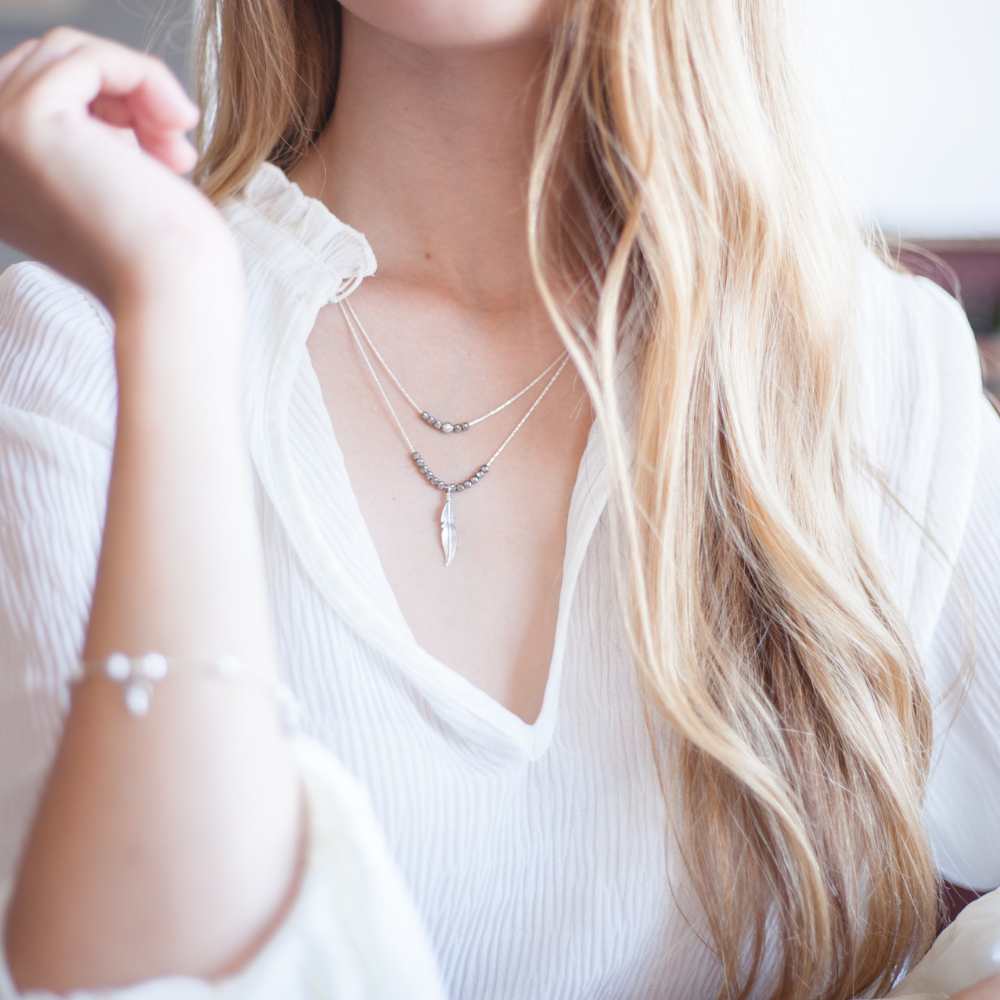
Purple Shampoo FAQ's
People often have a lot of questions about purple shampoo.
Most aren't sure what purple shampoo is, how to use it, or what the benefits are.
We've compiled a list of the most frequently asked questions about purple shampoo so that you can get all the information you need before you use it.
When should you not use purple shampoo?
Purple shampoo is a popular hair care product that is designed to neutralize brassy tones in blonde, silver and gray hair. However, there are certain situations where you should avoid using purple shampoo:
- If you have dark hair: Purple shampoo is not recommended for those with dark hair as it can leave a purple tint on the hair.
- If you have dry or damaged hair: Purple shampoo can be quite drying, so if your hair is already dry or damaged, it may make the problem worse.
- If you have a sensitive scalp: Some people may experience scalp irritation when using purple shampoo, so if you have a sensitive scalp, it's best to avoid this product.
- If you're trying to maintain warm tones in your hair: So if you're trying to maintain warm tones, it may not be the best choice for you.
In general, it's always a good idea to consult with a hairstylist before using any new products on your hair to ensure that they are right for your specific needs and concerns.
Will purple shampoo lighten my hair?
No, purple shampoo is not designed to lighten hair. Its main purpose is to neutralize brassy or yellow tones in blonde, silver and gray hair by depositing a small amount of purple pigment onto the hair shaft.
The purple pigment in the shampoo helps to cancel out any unwanted warm tones that can make blonde or gray colored hair look dull or discolored.
However, it does not contain any harsh chemicals that can lift or bleach the natural color of your hair.
Is it okay to use purple shampoo every wash?
It's generally not recommended to use purple shampoo every time you wash your hair, especially if you have fine or dry hair.
While purple shampoo can be a great tool for neutralizing brassy tones and keeping your blonde or silver hair looking vibrant, using it too frequently can actually cause damage to your hair.
If you do decide to use purple shampoo regularly, it's best to start with once or twice a week and adjust based on how your hair responds.
If you notice any dryness or damage, cut back on how often you use the product and use regular shampoo instead.
Can I use normal conditioner after purple shampoo?
Yes, you can definitely use a normal conditioner after using purple shampoo.
In fact, it's recommended to follow up with a conditioner after using any type of shampoo to help hydrate and nourish your hair.
While this kind of shampoo can be beneficial for color-treated hair, it's important to remember that the shampoo itself does not provide any additional conditioning benefits.
A good quality conditioner can help to restore moisture and shine to your hair, leaving it feeling soft and smooth.
Just make sure to apply the conditioner evenly throughout your hair, focusing on the ends where it tends to be driest. Rinse thoroughly with cool water to seal the cuticle and lock in moisture for best results.
What is the difference between blue and purple shampoo?
Both blue and purple shampoos are toning shampoos that are designed to neutralize unwanted tones in hair. However, they work slightly differently and are intended for different hair colors.
Purple shampoo is typically used on blonde, silver, or gray tresses to neutralize yellow or brassy tones. Purple shampoo is best for light-colored hair that has been chemically treated or highlighted.
Blue shampoo, on the other hand, is designed for brunettes with highlights or balayage.
It contains blue pigments which help to counteract orange and red tones in brown hair. Blue shampoo can also be used on blonde hair that has turned brassy due to exposure to chlorine or minerals in hard water.
It's important to note that both types of toning shampoos should be used sparingly - usually no more than once a week - as they can be drying if overused.
Additionally, it's important to follow the instructions on the product label carefully and avoid leaving the shampoo on your extra porous hair for too long as this can lead to unwanted color deposits.
Does purple shampoo ruin hair or hair colour?
No, purple shampoo does not ruin hair or color when used properly.
In fact, it can help to maintain the vibrancy and longevity of your color-treated hair by neutralizing unwanted tones.
Does clarifying shampoo remove purple shampoo?
Yes, clarifying shampoo can remove purple shampoo from your hair.
Clarifying shampoos are designed to deep clean and remove buildup from the hair and scalp, so they can effectively strip away any residual pigments or color deposits left by toning shampoos like purple shampoo.
If you've been using purple shampoo for a while and notice that your hair color has developed a slight purple or gray cast, it may be time to use a clarifying shampoo to remove any buildup and restore your natural color.
However, it's important to note that frequent use of clarifying shampoos can also be drying and strip away natural oils from your hair, so it's best to use them sparingly.
Go for the Purple!
So in conclusion...yes purple shampoos do work on natural blonde hair - not just on bleached hair!
When used correctly (once every 1-2 weeks), this type of product can help neutralize warm undertones found naturally in some types of blonde tresses while bringing out cooler shades already present in each strand of your locks - making for brighter looking highlights between salon visits or at home touch ups!
That said - don't forget that too much use of purple shampoo dye could lead to buildup over time so be sure not to go overboard when using this type of product.
Thanks for sticking around until the end – we hope you enjoyed our investigation into whether or not purple shampoo really works on natural blondes – happy styling everyone!
In case you're here with some orange hair, we can help with as well! Did you do a bleaching oopsie with your hair? Do you need a product to tone hair back to its original state? Here is a list of the best blue toners for fixing your brassy hair after bleaching!



